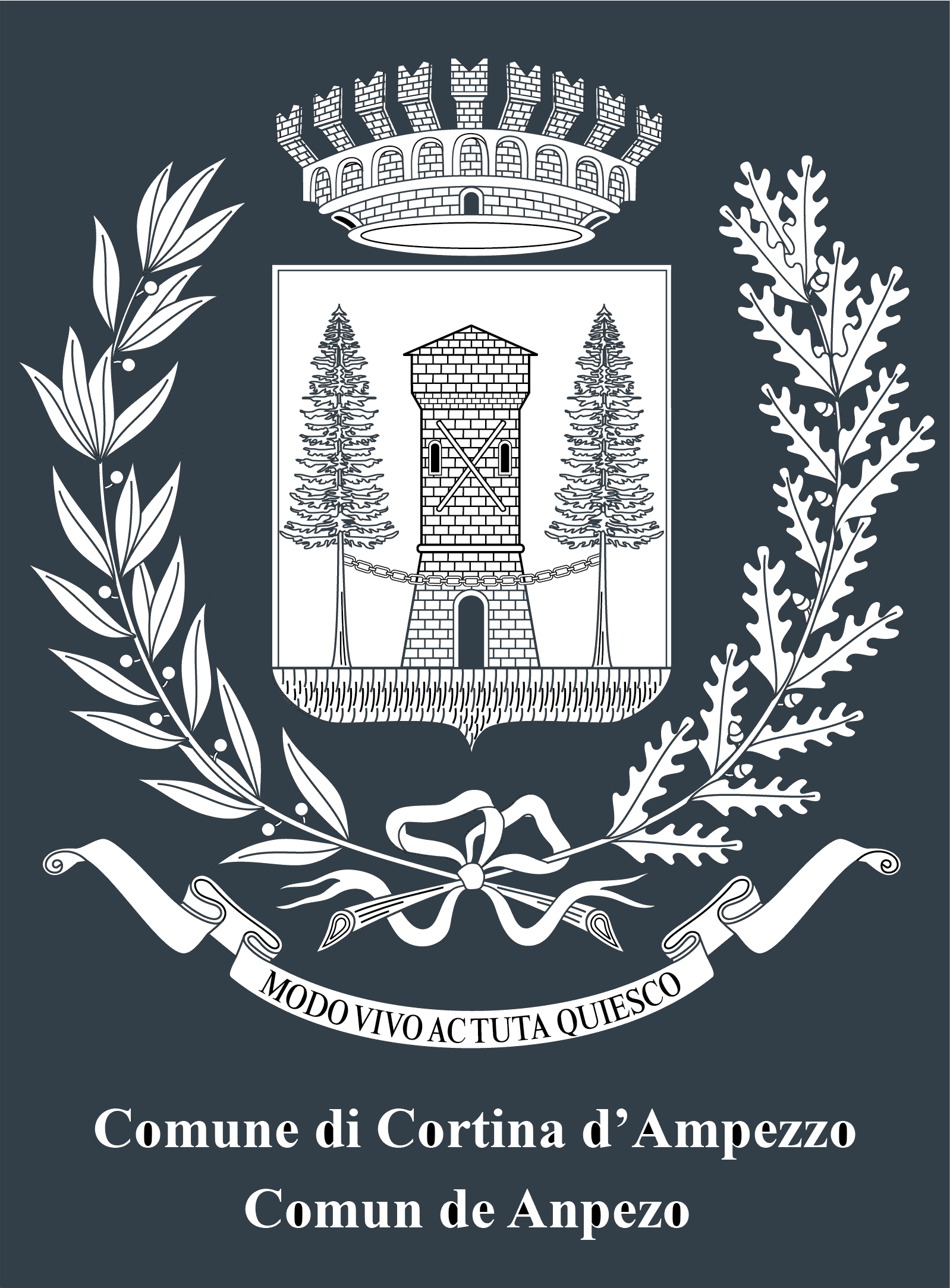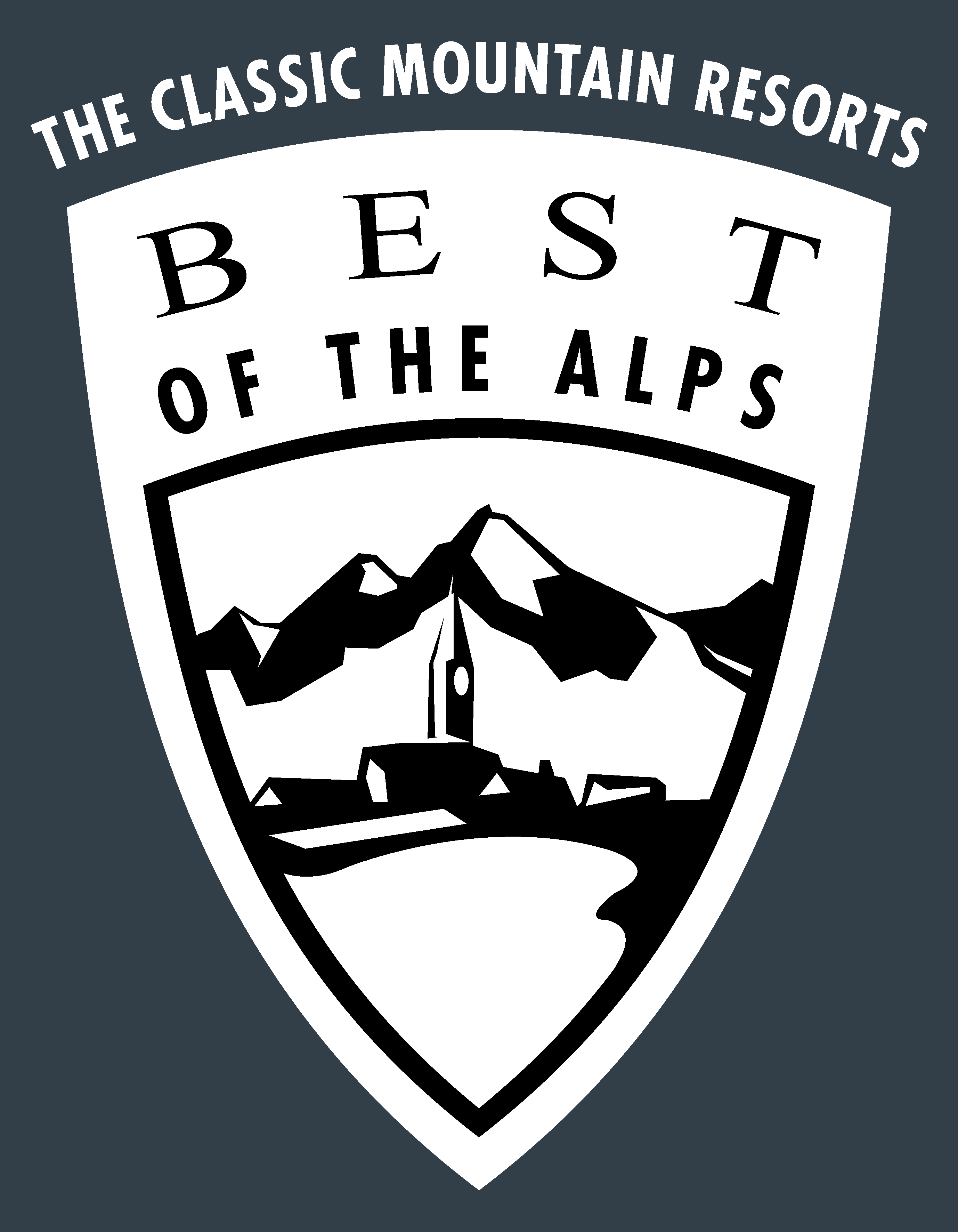
Malga Peziè de Parù, Baita Il Cervo, bar-restaurant of the Hotel Argentina
This crag is a long rocky strip located in a wooded area along the road from Cortina to Passo Giau, at the base of the Cinque Torri. The climbing area is located at 1,700-1,800 metres and faces south It is possible to climb there all year round, and in low snow conditions even on sunny days in winter. It is the first modern climbing location in Cortina and one of the most popular among local climbers because of its convenient location. There are more than 80 medium-difficult routes, some multi-pitch, between 6a and 8b+. The pitches are of varying lengths and up to 40 m (which is why an 80 m rope is recommended) and the rock is a flaky, pitched dolomite, overhanging in some areas. Climbing is never a matter of course and good footwork is necessary. The spacing of the pitons is suited to the difficulty of the routes, but less close than the Crépe de Oucèra Basse sector. Famous historical pitches include “Latte Acido”, “Melassa” and “Patapunfete”. The crag is divided into four sectors, connected by a comfortable path. From right to left, the Sectors are as follows: The Fedora Sector consists of a vast vertical wall of dolomite with pockets and indentations and requires technical climbing and is named after its most famous and characteristic route, a lovely 6a warm-up. The Magica Sector is characterised by an overhanging slab with compact rock that requires technique and endurance, divided into two walls: one yellow and one black. This sector encompasses some of the most beautiful sport climbing routes in Cortina, it is named after the “Magica Armonia” route, a superb sustained 7c route with many nubs and pockets on an arête of rare beauty. The Babuska Sector is very different in style when compared to the first two sectors: the rock is more friable and the wall more overhanging. Therefore, the climbing is athletic and calls for power, with intermediate-advanced grades of difficulty. The Dita di Burro Sector is characterised by routes with pockets graded between 6b and 7° and others with more technical climbing of high difficulty, including the “Polvere” route, an 8b+ route redpointed by Scoiattolo Luca Zardini “Canon”, the toughest route on the crag. Approach: from Cortina go uphill in the direction of Passo Giau-Passo Falzarego and at Pocol, after Hotel Argentina take the SP638 road in the direction of Passo Giau. After 4 km, at the end of a series of straights, park on the right in a long but narrow clearing. The tracks starting from here are 437 to the Cinque Torri, 434 and 437 to the Croda da Lago. Take a path further to the right than the one for the Cinque Torri, walk around a wooded hill and in about 100 m you reach the first sector (visible from the car park).

Malga Peziè de Parù, Baita Il Cervo, bar-restaurant of the Hotel Argentina
This crag is a long rocky strip located in a wooded area along the road from Cortina to Passo Giau, at the base of the Cinque Torri. The climbing area is located at 1,700-1,800 metres and faces south It is possible to climb there all year round, and in low snow conditions even on sunny days in winter. It is the first modern climbing location in Cortina and one of the most popular among local climbers because of its convenient location. There are more than 80 medium-difficult routes, some multi-pitch, between 6a and 8b+. The pitches are of varying lengths and up to 40 m (which is why an 80 m rope is recommended) and the rock is a flaky, pitched dolomite, overhanging in some areas. Climbing is never a matter of course and good footwork is necessary. The spacing of the pitons is suited to the difficulty of the routes, but less close than the Crépe de Oucèra Basse sector. Famous historical pitches include “Latte Acido”, “Melassa” and “Patapunfete”. The crag is divided into four sectors, connected by a comfortable path. From right to left, the Sectors are as follows: The Fedora Sector consists of a vast vertical wall of dolomite with pockets and indentations and requires technical climbing and is named after its most famous and characteristic route, a lovely 6a warm-up. The Magica Sector is characterised by an overhanging slab with compact rock that requires technique and endurance, divided into two walls: one yellow and one black. This sector encompasses some of the most beautiful sport climbing routes in Cortina, it is named after the “Magica Armonia” route, a superb sustained 7c route with many nubs and pockets on an arête of rare beauty. The Babuska Sector is very different in style when compared to the first two sectors: the rock is more friable and the wall more overhanging. Therefore, the climbing is athletic and calls for power, with intermediate-advanced grades of difficulty. The Dita di Burro Sector is characterised by routes with pockets graded between 6b and 7° and others with more technical climbing of high difficulty, including the “Polvere” route, an 8b+ route redpointed by Scoiattolo Luca Zardini “Canon”, the toughest route on the crag. Approach: from Cortina go uphill in the direction of Passo Giau-Passo Falzarego and at Pocol, after Hotel Argentina take the SP638 road in the direction of Passo Giau. After 4 km, at the end of a series of straights, park on the right in a long but narrow clearing. The tracks starting from here are 437 to the Cinque Torri, 434 and 437 to the Croda da Lago. Take a path further to the right than the one for the Cinque Torri, walk around a wooded hill and in about 100 m you reach the first sector (visible from the car park).

Malga Peziè de Parù, Baita Il Cervo, bar-restaurant of the Hotel Argentina
This crag is a long rocky strip located in a wooded area along the road from Cortina to Passo Giau, at the base of the Cinque Torri. The climbing area is located at 1,700-1,800 metres and faces south It is possible to climb there all year round, and in low snow conditions even on sunny days in winter. It is the first modern climbing location in Cortina and one of the most popular among local climbers because of its convenient location. There are more than 80 medium-difficult routes, some multi-pitch, between 6a and 8b+. The pitches are of varying lengths and up to 40 m (which is why an 80 m rope is recommended) and the rock is a flaky, pitched dolomite, overhanging in some areas. Climbing is never a matter of course and good footwork is necessary. The spacing of the pitons is suited to the difficulty of the routes, but less close than the Crépe de Oucèra Basse sector. Famous historical pitches include “Latte Acido”, “Melassa” and “Patapunfete”. The crag is divided into four sectors, connected by a comfortable path. From right to left, the Sectors are as follows: The Fedora Sector consists of a vast vertical wall of dolomite with pockets and indentations and requires technical climbing and is named after its most famous and characteristic route, a lovely 6a warm-up. The Magica Sector is characterised by an overhanging slab with compact rock that requires technique and endurance, divided into two walls: one yellow and one black. This sector encompasses some of the most beautiful sport climbing routes in Cortina, it is named after the “Magica Armonia” route, a superb sustained 7c route with many nubs and pockets on an arête of rare beauty. The Babuska Sector is very different in style when compared to the first two sectors: the rock is more friable and the wall more overhanging. Therefore, the climbing is athletic and calls for power, with intermediate-advanced grades of difficulty. The Dita di Burro Sector is characterised by routes with pockets graded between 6b and 7° and others with more technical climbing of high difficulty, including the “Polvere” route, an 8b+ route redpointed by Scoiattolo Luca Zardini “Canon”, the toughest route on the crag. Approach: from Cortina go uphill in the direction of Passo Giau-Passo Falzarego and at Pocol, after Hotel Argentina take the SP638 road in the direction of Passo Giau. After 4 km, at the end of a series of straights, park on the right in a long but narrow clearing. The tracks starting from here are 437 to the Cinque Torri, 434 and 437 to the Croda da Lago. Take a path further to the right than the one for the Cinque Torri, walk around a wooded hill and in about 100 m you reach the first sector (visible from the car park).

Malga Peziè de Parù, Baita Il Cervo, bar-restaurant of the Hotel Argentina
This crag is a long rocky strip located in a wooded area along the road from Cortina to Passo Giau, at the base of the Cinque Torri. The climbing area is located at 1,700-1,800 metres and faces south It is possible to climb there all year round, and in low snow conditions even on sunny days in winter. It is the first modern climbing location in Cortina and one of the most popular among local climbers because of its convenient location. There are more than 80 medium-difficult routes, some multi-pitch, between 6a and 8b+. The pitches are of varying lengths and up to 40 m (which is why an 80 m rope is recommended) and the rock is a flaky, pitched dolomite, overhanging in some areas. Climbing is never a matter of course and good footwork is necessary. The spacing of the pitons is suited to the difficulty of the routes, but less close than the Crépe de Oucèra Basse sector. Famous historical pitches include “Latte Acido”, “Melassa” and “Patapunfete”. The crag is divided into four sectors, connected by a comfortable path. From right to left, the Sectors are as follows: The Fedora Sector consists of a vast vertical wall of dolomite with pockets and indentations and requires technical climbing and is named after its most famous and characteristic route, a lovely 6a warm-up. The Magica Sector is characterised by an overhanging slab with compact rock that requires technique and endurance, divided into two walls: one yellow and one black. This sector encompasses some of the most beautiful sport climbing routes in Cortina, it is named after the “Magica Armonia” route, a superb sustained 7c route with many nubs and pockets on an arête of rare beauty. The Babuska Sector is very different in style when compared to the first two sectors: the rock is more friable and the wall more overhanging. Therefore, the climbing is athletic and calls for power, with intermediate-advanced grades of difficulty. The Dita di Burro Sector is characterised by routes with pockets graded between 6b and 7° and others with more technical climbing of high difficulty, including the “Polvere” route, an 8b+ route redpointed by Scoiattolo Luca Zardini “Canon”, the toughest route on the crag. Approach: from Cortina go uphill in the direction of Passo Giau-Passo Falzarego and at Pocol, after Hotel Argentina take the SP638 road in the direction of Passo Giau. After 4 km, at the end of a series of straights, park on the right in a long but narrow clearing. The tracks starting from here are 437 to the Cinque Torri, 434 and 437 to the Croda da Lago. Take a path further to the right than the one for the Cinque Torri, walk around a wooded hill and in about 100 m you reach the first sector (visible from the car park).

Malga Peziè de Parù, Baita Il Cervo, bar-restaurant of the Hotel Argentina
This crag is a long rocky strip located in a wooded area along the road from Cortina to Passo Giau, at the base of the Cinque Torri. The climbing area is located at 1,700-1,800 metres and faces south It is possible to climb there all year round, and in low snow conditions even on sunny days in winter. It is the first modern climbing location in Cortina and one of the most popular among local climbers because of its convenient location. There are more than 80 medium-difficult routes, some multi-pitch, between 6a and 8b+. The pitches are of varying lengths and up to 40 m (which is why an 80 m rope is recommended) and the rock is a flaky, pitched dolomite, overhanging in some areas. Climbing is never a matter of course and good footwork is necessary. The spacing of the pitons is suited to the difficulty of the routes, but less close than the Crépe de Oucèra Basse sector. Famous historical pitches include “Latte Acido”, “Melassa” and “Patapunfete”. The crag is divided into four sectors, connected by a comfortable path. From right to left, the Sectors are as follows: The Fedora Sector consists of a vast vertical wall of dolomite with pockets and indentations and requires technical climbing and is named after its most famous and characteristic route, a lovely 6a warm-up. The Magica Sector is characterised by an overhanging slab with compact rock that requires technique and endurance, divided into two walls: one yellow and one black. This sector encompasses some of the most beautiful sport climbing routes in Cortina, it is named after the “Magica Armonia” route, a superb sustained 7c route with many nubs and pockets on an arête of rare beauty. The Babuska Sector is very different in style when compared to the first two sectors: the rock is more friable and the wall more overhanging. Therefore, the climbing is athletic and calls for power, with intermediate-advanced grades of difficulty. The Dita di Burro Sector is characterised by routes with pockets graded between 6b and 7° and others with more technical climbing of high difficulty, including the “Polvere” route, an 8b+ route redpointed by Scoiattolo Luca Zardini “Canon”, the toughest route on the crag. Approach: from Cortina go uphill in the direction of Passo Giau-Passo Falzarego and at Pocol, after Hotel Argentina take the SP638 road in the direction of Passo Giau. After 4 km, at the end of a series of straights, park on the right in a long but narrow clearing. The tracks starting from here are 437 to the Cinque Torri, 434 and 437 to the Croda da Lago. Take a path further to the right than the one for the Cinque Torri, walk around a wooded hill and in about 100 m you reach the first sector (visible from the car park).




Head Office: Loc. Sacus 4, 32043 Cortina d’Ampezzo (BL) – P.I. 00806650255 | Privacy Policy – Cookie Policy
The Cortina Skyline is back!
Starting December 23, 2025, the lift system connecting Tofane, 5 Torri, and Falzarego will be back in operation.
A spectacular journey among the peaks, made possible by the synergy between Servizi Ampezzo S.r.l. and ISTA S.p.A.
Ready to touch the sky?